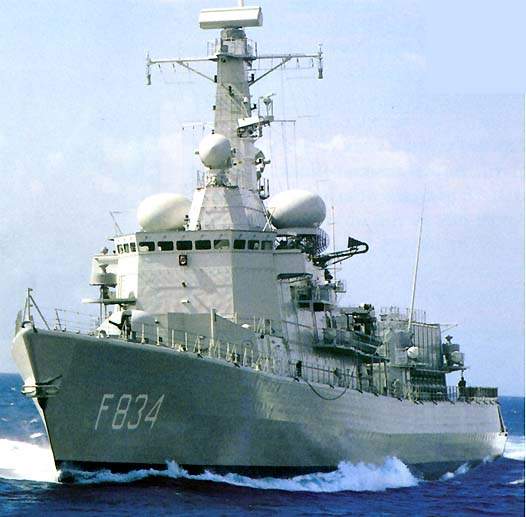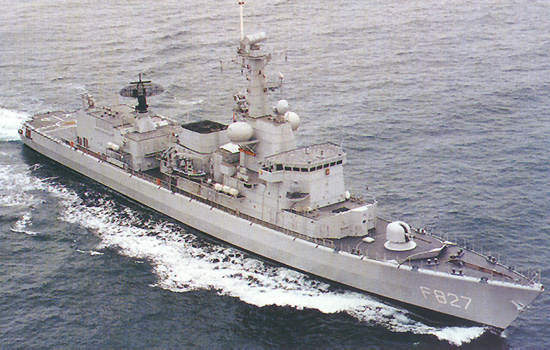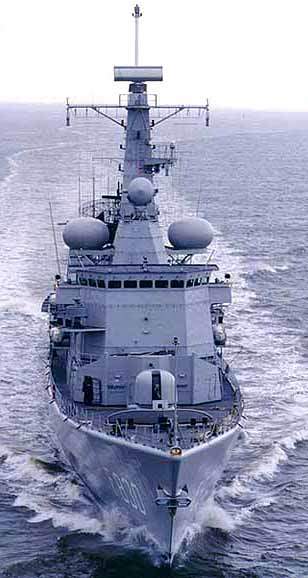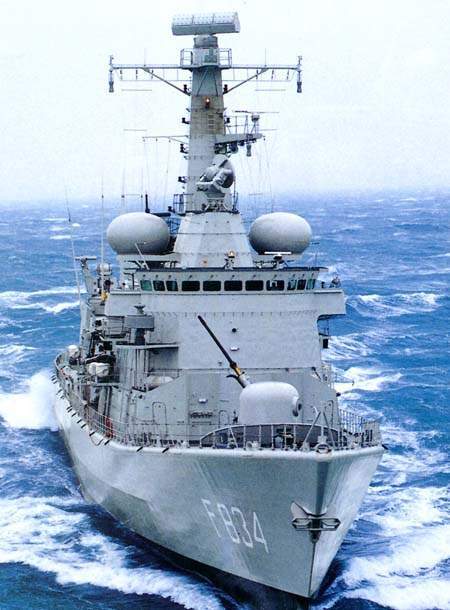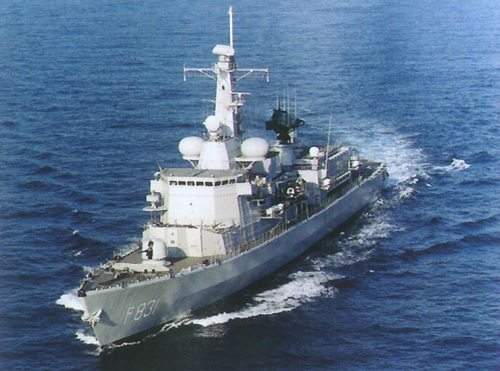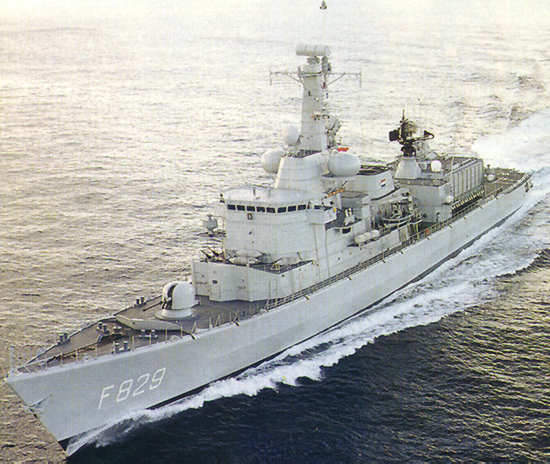The Royal Netherlands Navy multipurpose (M Class) or Karel Doorman Class frigates were built by the De Schelde Group in Flushing and have been operational since 1996. They are equipped for anti-submarine, anti-air and surface warfare roles. M Class frigates have supported anti-drug operations in the Caribbean with the US Navy, UN operations in the Adriatic and regularly participate in Nato exercises.
The eight ships of the class are: Karel Doorman (F827), commissioned 1991, Willem Van Der Zaan (F829), 1991, Tjerk Hiddes (F830), 1992, Van Amstel (F831), 1993, Abraham Van Der Hulst (F832), 1993, Van Nes (F833), 1994, Van Galen (F834), 1994 and Van Spejk (F828), 1995.
In March 2004, the Royal Netherlands Navy signed a contract for the transfer of two M Class frigates to the Chilean Navy.
Abraham Van Der Hulst (F832), now named Almirante Blanco Encalada, was handed over in December 2005 and and Tjerk Hiddes (F830), now Almirante Riveros, was handed over in April 2007. Chile has requested the foreign military sale of Harpoon RGM-84L Block II missiles to arm the frigates.
In December 2005, the defence ministers of the Netherlands and Belgium signed a contract for the sale of two Karel Doorman frigates to the Belgian Navy. Karel Doorman (F827) was transferred to the Belgian Navy in March 2007 and christened Leopold I (F930). Willem Van Der Zaan (F829) was decommissioned in August 2006, transferred to the Belgian Navy in April 2008, and rechristened the Louise-Marie (F931).
In November 2006, it was announced that two Karel Doorman frigates would be sold to Portugal. The Dutch Navy handed over the first frigate, HNMS Van Nes in January 2009. The second, HNMS Van Galen was delivered in November 2009.
The vessels Van Nes and Van Galen have now been renamed NRP Bartolomeu Dias (F333) and Francisco de Almeida (F334) respectively.
Van Amstel (F831) and Van Spejk (F828) will remain serving in the Dutch Navy fleet.
Karel Doorman command and control
Thales Nederland (formerly Signaal) SEWACO VIIB integrates data from sensor systems and provides weapon control. A subsystem, the multiweapon control system (MWCS) controls the 76mm gun and Sea Sparrow missile system. SEWACO also integrates navigation systems, communications systems and automatic datalink.
Missiles
The ship is equipped with two quad launchers for the Boeing Harpoon block 1C anti-ship missile. Harpoon has an active radar seeker with inertial mid-course guidance, a 220kg warhead and a range of 120km.
For short-range air defence, the ship has a mk48 vertical launch system for Raytheon Sea Sparrow missile, which uses semi-active radar guidance and has a range of 14km. 16 missiles are carried.
Guns
The main gun is a 76mm Oto Melara mk100 which is capable of firing 100 rounds a minute with a range of 16km anti-surface and 12km anti-air. Also fitted are two Oerlikon 20mm light cannon.
The Thales Nederland Goalkeeper close-in weapon system (CIWS) is fitted, which consists of a 30mm seven-barrel gun providing a rate of fire of over 4,000 rounds a minute. Range is 200m to 3km. Thales Nederland’s IRSCAN infrared search and track system has been fitted to the Willem Van Der Zaan (F 829) for trials. It provides target detection and tracking for Goalkeeper.
Torpedoes
Two twin mk32 mod 9 torpedo tubes fire ATK (Alliant TechSystems) mk46 mod 5 lightweight anti-submarine torpedoes. These are active / passive homing to a range of over 9km and carry a 45kg warhead.
Helicopter
The ship carries one AgustaWestland Lynx SH-14D helicopter for anti-submarine warfare (ASW). Lynx is armed with two mk46 torpedoes and dipping sonar and has been upgraded with FLIR (forward-looking infrared) systems 2000HP. All 20 Lynx helicopters of the RNlN are due to be replaced with NH90 helicopters from 2007.
Karel Doorman countermeasures
There are two mk36 SRBOC (super rapid blooming offboard chaff) quad launchers from Sippican Hycor which fire chaff to a range of 4km. An AN/SLQ-25 Nixie towed torpedo decoy, from Argon ST of Newington, Virginia, is fitted which has two towed units that emit acoustic signals from an onboard transmitter.
ARGOSystems APECS II radar detection and jamming system can identify and jam up to 16 threats simultaneously. Detection range is 370km for ships and 93km for aircraft.
Sensors
Air and surface search is provided by Thales Nederland’s SMART-S 3D radar. This operates in the F-band and range is 100km for a 2m² target. Thales Nederland’s LW-08 2D long-range search radar is also fitted, which operates in the D-band and has a range of 230km. Two Thales Nederland STIR tracking and illuminating radars provide fire control for the Seasparrow missile and 76mm gun. STIR operates in I and K bands and has a range of 140km. There is also a Thales (formerly Racal 1226) navigation radar.
The ship is fitted with Thales Underwater Systems (formerly Thomson Marconi Sonar) Anaconda DSBV 61 very-low-frequency passive towed array sonar mounted on the hull at the bow. Thales Nederland’s PHS-36 medium frequency active search and attack sonar is mounted on the hull at the front. The RNlN is planning to upgrade the ASW suite with a low frequency active sonar (LFAS).
Propulsion
The ship is powered by a CODOG system – combined diesel or gas turbine. Main propulsion is provided by two Rolls Royce Spey 1A gas turbines each providing 12MW. For cruising there are two Stork Werkspoor diesel engines, each 3.6MW.

